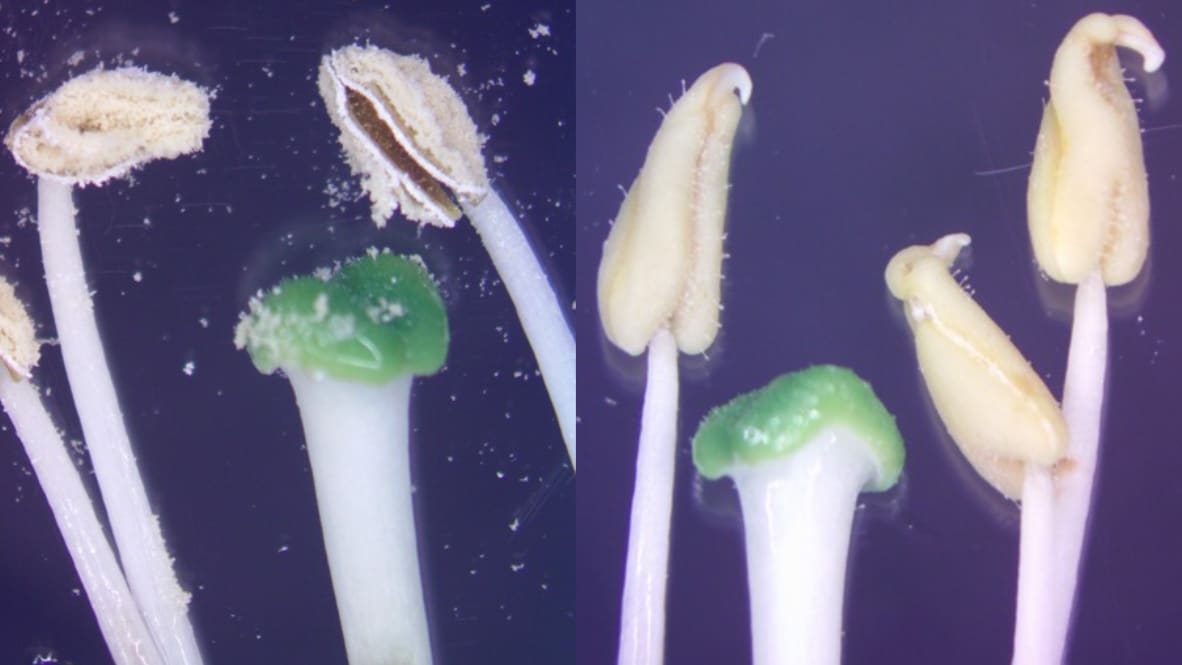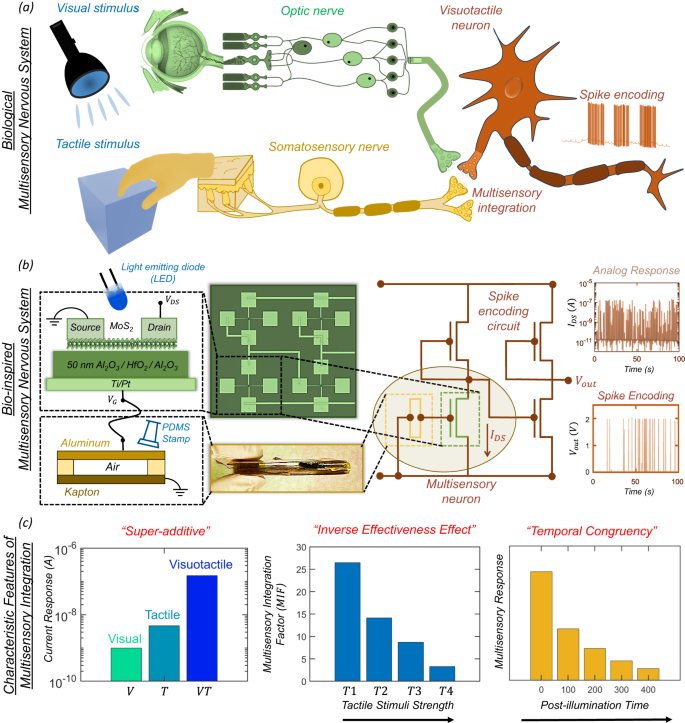2023-09-15 ノースカロライナ州立大学(NCState)
 The anthers of normal tobacco plants (left) produce and shed abundant amounts of pollen; plants with the mitochondrial gene deletion (right) have malformed anthers that produce no pollen. Photo courtesy of Ralph Dewey, NC State University.
The anthers of normal tobacco plants (left) produce and shed abundant amounts of pollen; plants with the mitochondrial gene deletion (right) have malformed anthers that produce no pollen. Photo courtesy of Ralph Dewey, NC State University.
◆この成果は、ハイブリッド種子の生産方法の改善や、フルーツ種に無核性を導入する可能性があります。彼らはミトコンドリアでの遺伝子の移動を行い、タバコでCMS(サイトプラズム性雄性不稔)特性を生成できるかどうかを実証しました。
◆このアプローチは成功し、花粉の生成が停止し、種子も形成されました。次のステップではトマトや米などの他の植物での試験が行われる予定です。この技術は植物種に広く応用可能であり、作物の収穫量を最大化するための新たな方法の可能性を示唆しています。
<関連情報>
- https://news.ncsu.edu/2023/09/no-pollen-no-seeds/
- https://www.frontiersin.org/articles/10.3389/fpls.2023.1253640/full
ミトコンドリアゲノム編集とatp1の同所性発現を組み合わせたタバコの細胞質雄性不稔と不成功種子形質
Cytoplasmic male sterility and abortive seed traits generated through mitochondrial genome editing coupled with allotopic expression of atp1 in tobacco
Ralph E. Dewey, Devarshi Selote, H. Carol Griffin, Allison N. Dickey, Derek Jantz, J. Jeff Smith, Anna Matthiadis, Josh Strable, Caitlin Kestell, William A. Smith
Frontiers in Plant Science Published:15 September 2023
DOI:https://doi.org/10.3389/fpls.2023.1253640
Allotopic expression is the term given for the deliberate relocation of gene function from an organellar genome to the nuclear genome. We hypothesized that the allotopic expression of an essential mitochondrial gene using a promoter that expressed efficiently in all cell types except those responsible for male reproduction would yield a cytoplasmic male sterility (CMS) phenotype once the endogenous mitochondrial gene was inactivated via genome editing. To test this, we repurposed the mitochondrially encoded atp1 gene of tobacco to function in the nucleus under the transcriptional control of a CaMV 35S promoter (construct 35S:nATP1), a promoter that has been shown to be minimally expressed in early stages of anther development. The endogenous atp1 gene was eliminated (Δatp1) from 35S:nATP1 tobacco plants using custom-designed meganucleases directed to the mitochondria. Vegetative growth of most 35S:nATP1/Δatp1 plants appeared normal, but upon flowering produced malformed anthers that failed to shed pollen. When 35S:nATP1/Δatp1 plants were cross-pollinated, ovary/capsule development appeared normal, but the vast majority of the resultant seeds were small, largely hollow and failed to germinate, a phenotype akin to the seedless trait known as stenospermocarpy. Characterization of the mitochondrial genomes from three independent Δatp1 events suggested that spontaneous recombination over regions of microhomology and substoichiometric shifting were the mechanisms responsible for atp1 elimination and genome rearrangement in response to exposure to the atp1-targeting meganucleases. Should the results reported here in tobacco prove to be translatable to other crop species, then multiple applications of allotopic expression of an essential mitochondrial gene followed by its elimination through genome editing can be envisaged. Depending on the promoter(s) used to drive the allotopic gene, this technology may have potential application in the areas of: (1) CMS trait development for use in hybrid seed production; (2) seedless fruit production; and (3) transgene containment.


